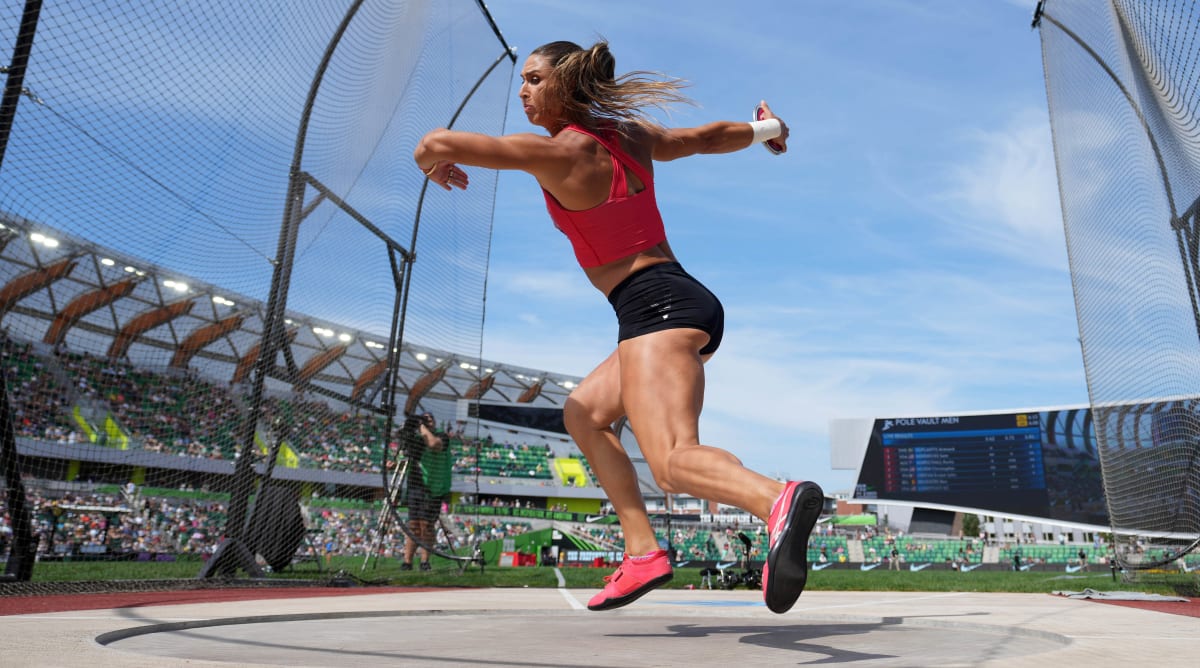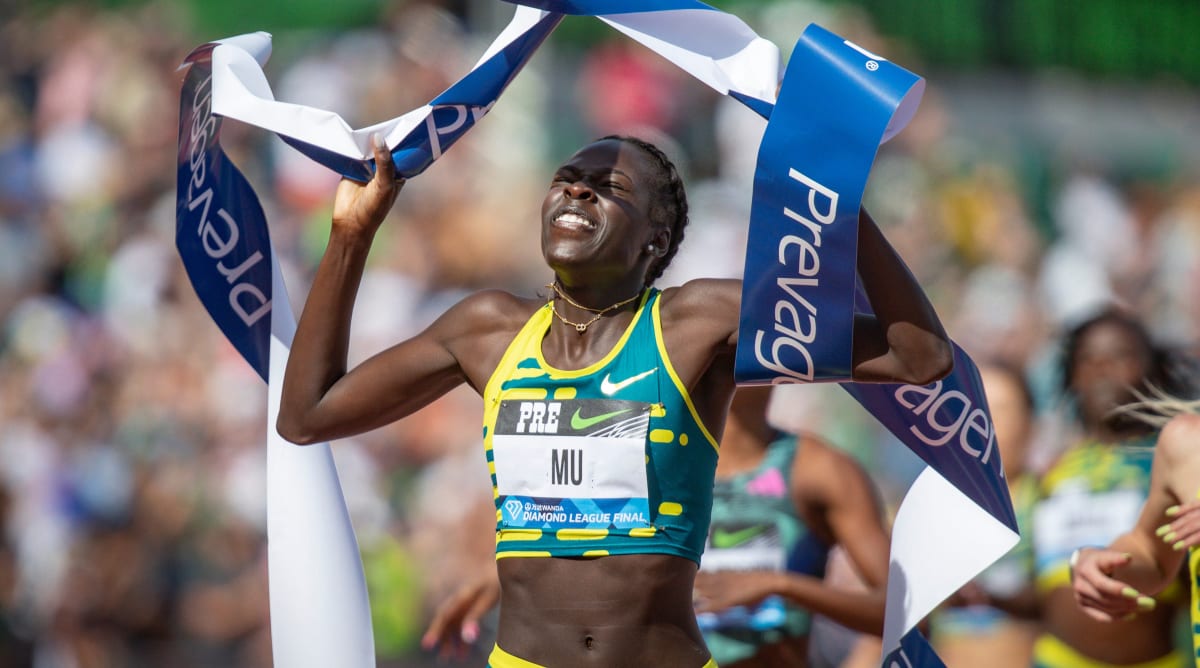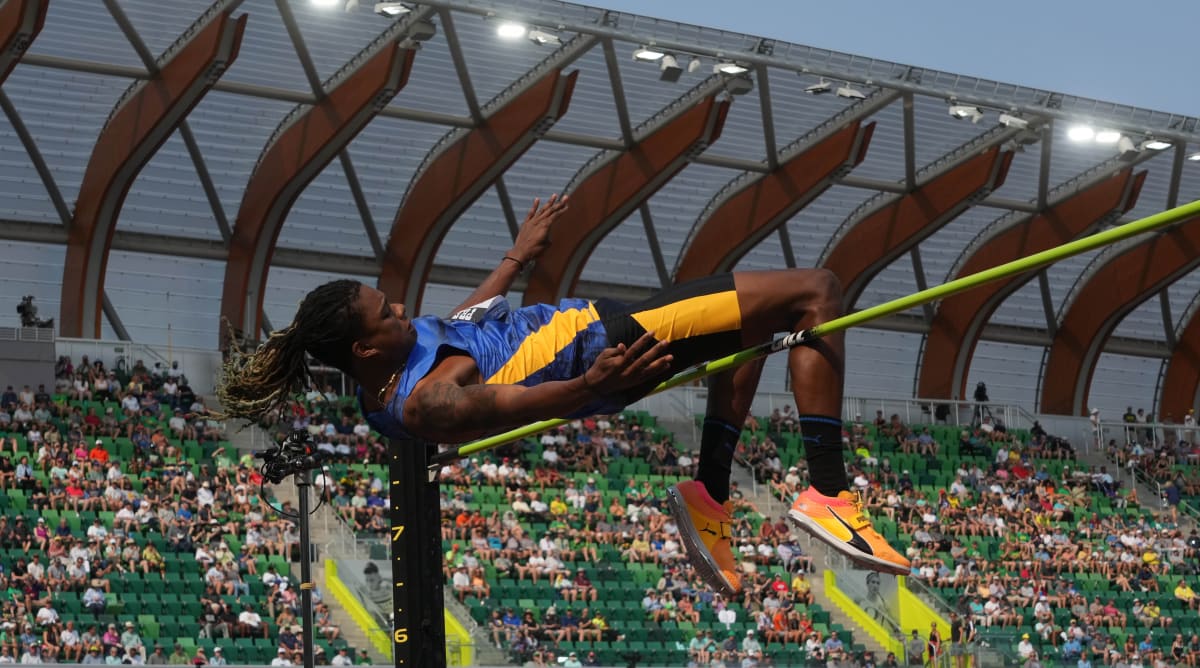Back around 2018, after graduating from Stanford with a bachelor’s degree in product design but before she could pursue world-class track dominance, Valarie Allman had to make a choice. No pressure, right? Ha! This particular choice would only dictate her … ominous drumroll here … entire future.
While true, Allman had two options in the neighborhood of ideal. Microsoft had offered her a job. But if she turned the offer down, she could instead pursue her Olympic discus ambitions, which would mean much more risk and far less money, countered. Eventually, she decided that the more predictable path could be resumed later, while her athletic endeavors were limited by a host of factors. Among them: age, timing, windows of possibility and primes, training, potential, growth, even luck. Microsoft guaranteed not just employment but exactly the kind she wanted and worked toward. Track guaranteed her nothing more than a chance to realize her dream by throwing discuses in stadiums across the world.

Kirby Lee/USA TODAY Sports
“Honestly, there were times I was quite worried,” she says in mid-September, on the phone from Oregon, where she’s hoping to defend her Prefontaine Classic crown. “And then it got delayed.”
By COVID-19, of course, which upended her world and the world, delaying the next Olympic cycle, pushing the Tokyo Games to the summer of 2021. Like the rest of her U.S. teammates, Allman confronted even more uncertainty. “So scary,” she says. “It felt like my world was crumbling.”
For her and many others, though, the delay helped more than it hurt. The global pandemic gifted Allman another year of preparation. And, once in Tokyo, she became the first American women’s discus competitor to seize an Olympic gold medal since 2008. Inside the sweltering sauna known as National Stadium, Allman displayed the graceful movement born from her dance training growing up. She spent a full year performing with The Pulse on Tour, traveling all over the country, working with the choreographers from So You Think You Can Dance. In Tokyo, she became part of a young, experienced, ideally timed crop of U.S. track and field dominators. Their collective and individual talents should make for compelling television next summer, when the Paris Games begin. New show, new title. So You Think You Can Win?
She does. They all do. Athing Mu (21 years old, 800-meter runner, Olympic gold medalist). Sydney McLaughlin-Levrone (24, 400-meter hurdles, gold medalist). Noah Lyles (26, sprinter, bronze medalist). Rai Benjamin (26, 400-meter and 400-meter hurdles runner, silver medalist, albeit with the second-fastest time in the history of his event). Sha’Carri Richardson (23, sprinter). Fred Kerley (28, sprinter, silver medalist). Grant Holloway (25, 110-meter hurdles, silver medalist). Erriyon Knighton (19, sprinter). Gabby Thomas (26, sprinter, silver and bronze medalist). Michael Norman (26, sprinter, gold medalist). Raven Saunders (27, shot put, silver medalist). Chris Nilsen (25, pole vault, silver medalist). Kenny Bednarek (25, sprint, silver medalist). Raevyn Rogers (27, 800-meter runner, bronze medalist). At 28, Allman is now one of the older top competitors.
While competing in Tokyo, Allman exuded this group’s dominant shared emotion: joy. She wonders whether that was born from relief, achievement, intensity or some combination of, well, everything. “I felt like I had seriously won a jackpot,” she says. “Beautiful moment, with a sense of deep honor and pride.”
That’s the thing, though. Because of these competitors, their respective ages and their stadiums’ worth of combined accomplishments, any joy present for simply competing in Tokyo will be replaced by experience in Paris, not to mention even higher aims. Allman and her teammates all expect to improve their sizable medal count next July and August. In Japan, USTAF nabbed seven gold, 12 silver and seven bronze medals—and despite a less-than-expected performance from its male sprinters (relative to more typical expectations). Which doesn’t guarantee anything in France, beyond what’s possible—and with this team, in this cycle, what’s possible is, well, also everything.
“The overall talent is definitely elevating,” she says. “I’m most excited about women’s throwing. In the last four years, it’s truly insane how much momentum we have. It’s something we’ve never done before.”
Good thing she turned down Microsoft.

Ben Lonergan/The Register-Guard /USA TODAY NETWORK
The U.S. track and field team is not really a team at all. It’s a collection of really fast, really strong, really agile humans. Some share the same coaches. But they’re not a classic “team” in any sense beyond the broad umbrella that is track and field. When all compete at the sport’s largest events—the World Championships, most years; the Olympics, every four—they become a makeshift, loosely assembled, track version of the typical concept.
This isn’t unimportant. Track exists in a small slice of the U.S. sports’ consciousness. During Olympic years, under the right conditions, or beyond greatness so obvious (like with Carl Lewis), the sport can demand recognition. In all other years, track is wildly popular outside America—and largely ignored inside U.S. borders.
At the 48th iteration of the Prefontaine Classic, the “team” that hopes to infiltrate American televisions next summer continued to take shape. The event itself was part of the Diamond League, track’s top competition outside of the major international events, for the first time in the U.S. Elite sprinters, runners, throwers, vaulters and the rest descended on Eugene, Ore., site of last year’s World Championships—another first for track and field in America. Many of those invested in the sport’s growth point to markers such as these as proof that nationwide efforts are, well, working.
The U.S. dominated those worlds, winning 33 medals, or 23 more than the next-highest tally. With a smaller team at Prefontaine in mid-September, the Americans still snatched 25 podium finishes in Eugene, while seven competitors finished fourth in their respective events.
The plan, in other words, is falling into place. More resources. More youth development programs. More access to a sport where many events cost little to compete in. More TV time in better programming slots, on networks like NBC. More investment, like from Nike, which funded a $270 million renovation of Hayward Field, the country’s most lavish track stadium a misnomer no longer, not with those packed grandstands, water stations and a staggering tower looming over all. The hope, all along, was that more of many things would net the desired results. So far, so good.
The pool of elite, young, U.S. talent is ocean-floor deep. But depth doesn’t capture the star potential of the most promising American competitors. Like Mu, the youngest and perhaps brightest, who won two golds in Tokyo but struggled somewhat afterward with the demands of newfound stardom. Mu embarked on a lighter schedule this season, in order to ascertain “what the world wants from me.” As she rounded back toward a more centered bearing, she still showed up at worlds (she finished third in the 800) and made a surprise, late entry into Pre.
What happened in the interim won’t show up on any results list. But a happier Mu is also a faster Mu, as evidenced by the new American record (1:54.97) she set for the 800 in Eugene. And that Mu still has eight-plus months to prep for Paris.
While considering her “team” on a recent and wide-ranging Zoom interview in late September, Mu says the youth and potential of this particular group is cyclical, another new wave of talent, not the first or even the only recent one. “But if people are talking about track here,” she says, “that’s a good thing.”
That’s partly why Mu took the time to process all the ways in which her world had changed, was changing. For Paris, she plans to “take it all in.”
Mu also doesn’t disagree with something Allman said about teams in track and field. Yes, their sport is almost entirely individual in nature. “But,” Allman says, “it’s more impactful to draw joy from being part of something that’s bigger than yourself.”
“I like that,” Mu says.

Kirby Lee/USA TODAY Sports
Questions linger, as another Olympic cycle dawns. McLaughlin-Levrone, the most dominant of all the U.S. competitors, not just the owner of the 400-meter hurdles world record but someone who set that record four separate times, is considering whether she will also run the 400-meter race, sans hurdles, or perhaps even compete in both. “Is it bad to say I don’t know?” she told reporters earlier this season. “Honestly, ask me after tomorrow. I don’t know.”
She’s not the only dual threat. Consider someone like JuVaughn Harrison, the LSU star with realistic ambitions to medal in the long jump and the high jump. That almost never happens. In Tokyo, the man known, fittingly, as Mr. Jumps finished fifth (long) and seventh (high). At this year’s worlds, he collected a silver in the high jump.
Oddly enough, Mr. Jumps didn’t receive his moniker until 2021, his senior year at LSU. “Took me a while to get used to it,” he says.
Harrison does not hail from a family of leapers or jumpers or springy types. “I’m an anomaly,” he says. He could dunk a basketball starting in ninth grade. He still believes he could win the NBA’s slam dunk contest, if given enough time to prepare. His windmill is sick. But because of his combined jumping talents, imagine Michael Jordan’s cradle or Zach LaVine’s leap from the free throw line. Iconic, per Mr. Jumps, who hopes that same word will define him next summer. Him and the U.S. team.
Harrison can jump so high that, sometimes, he can look down at the rim. There’s a metaphor in there somewhere, for a team that’s teeming with young, elite talent and a jumper hoping to elevate said team. They’re all ready to do what he already does best—leap.







